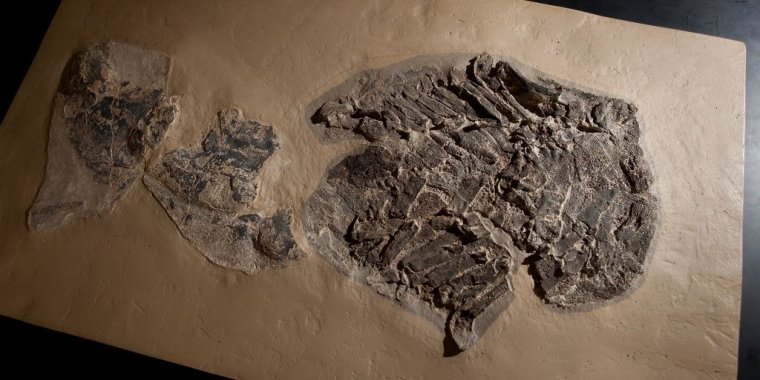| News / Science News |
Ancient sharks likely more diverse than previously thought
Sharks have a reputation as ravenous hunters and apex predators, but new analysis of fossil records shows that some of the earliest sharks might have been filter feeders, taking in water through their mouths and catching food particles -- think less great white and more anchovy, another filter feeder.

Fossil skeleton of the ancient shark Gladbachus. Image credit: University of Chicago/NSF
This research pushes the date for the last common ancestor between sharks and other types of jawed vertebrates back to 440 million years ago -- more than 17 million years older than the previous estimate -- and raises new questions about what life was like during a prehistoric period long shrouded in secrecy.
The specimen causing researchers to rethink the body plans of early sharks is known as Gladbachus.
At roughly 30 inches long, it would have lacked the typical elongated shark's profile, instead having a stubby snout and large, forward-facing eyes. Its body would have been fairly flat, like a combination of a shark and a catfish. And, significantly, its head would have made up about a third of its body length, with big gills.
Instead of lurking on the seafloor and ambushing prey, as many of its contemporaries did, Gladbachus may have been one of the first vertebrates to live in the water column -- the space between the ocean's surface and bottom -- where anchovies, sardines and herring make their home today.
That Gladbachus reconstruction model runs counter to some long-held notions in marine paleobiology. For a long time, sharks were considered "primitive," having evolved a body type long ago, with relatively little diversity in their early existence. But in the past decade, the scientific community has chipped away at that notion.
Sharks are cartilaginous, which means their skeletons are made of cartilage, not bones. While this allows them to be fast swimmers, it also means their skeletons often rot away instead of fossilizing.
Teeth and scales, along with a small amount of calcified cartilage from the jaw and gill structure of a Gladbachus, dated back 385 million years, were collected in Germany which, like most of Europe, was covered by seawater during the ancient shark's lifetime.
Sharks developed as an evolutionary offshoot from bony fish -- non-armored species with skeletons made of bone, like modern fish.
The findings also indicate that the last common ancestor between sharks and other types of jawed vertebrates must have existed much earlier than previously thought -- by more than 17 million years. (National Science Foundation)
YOU MAY ALSO LIKE



